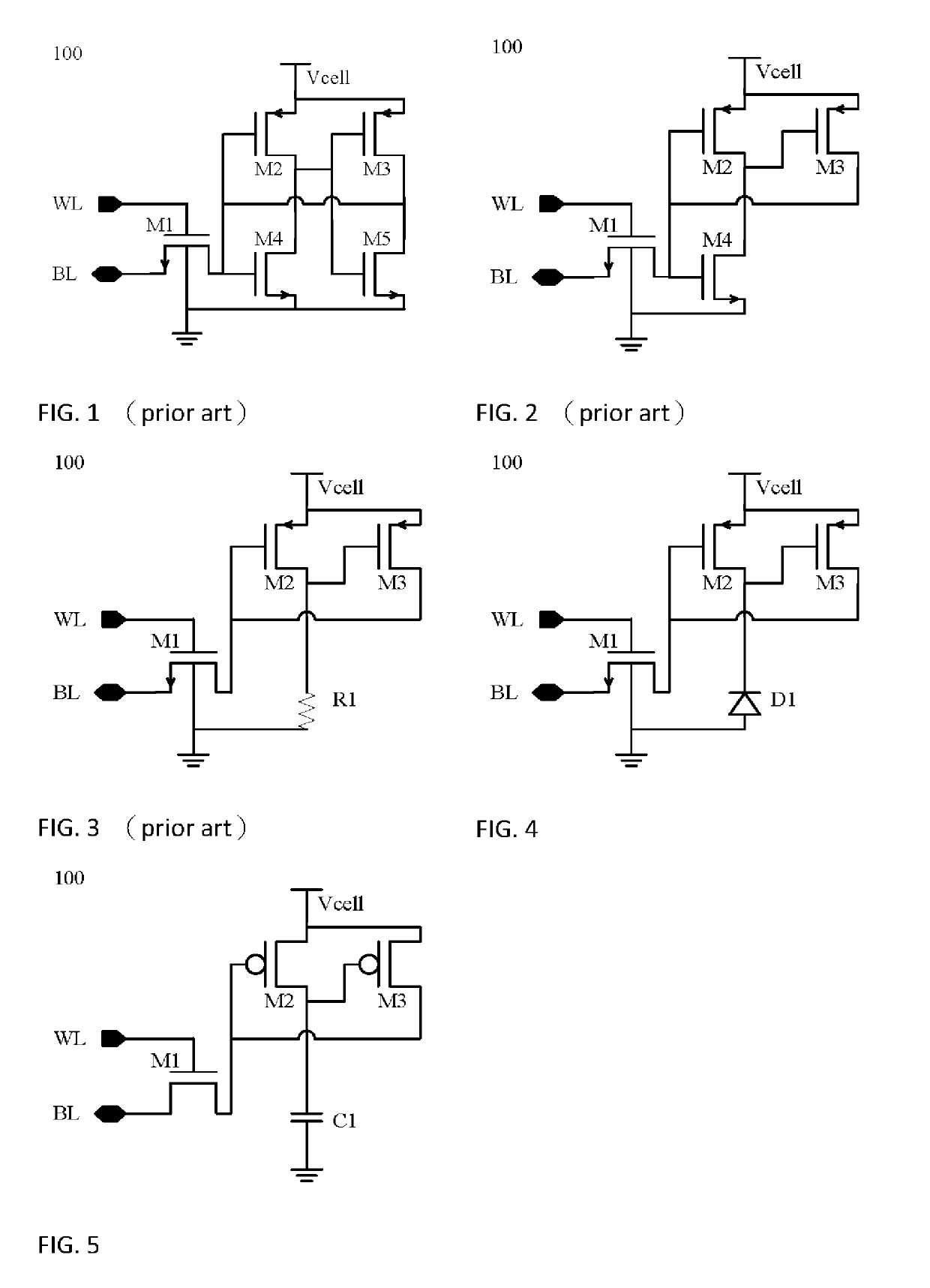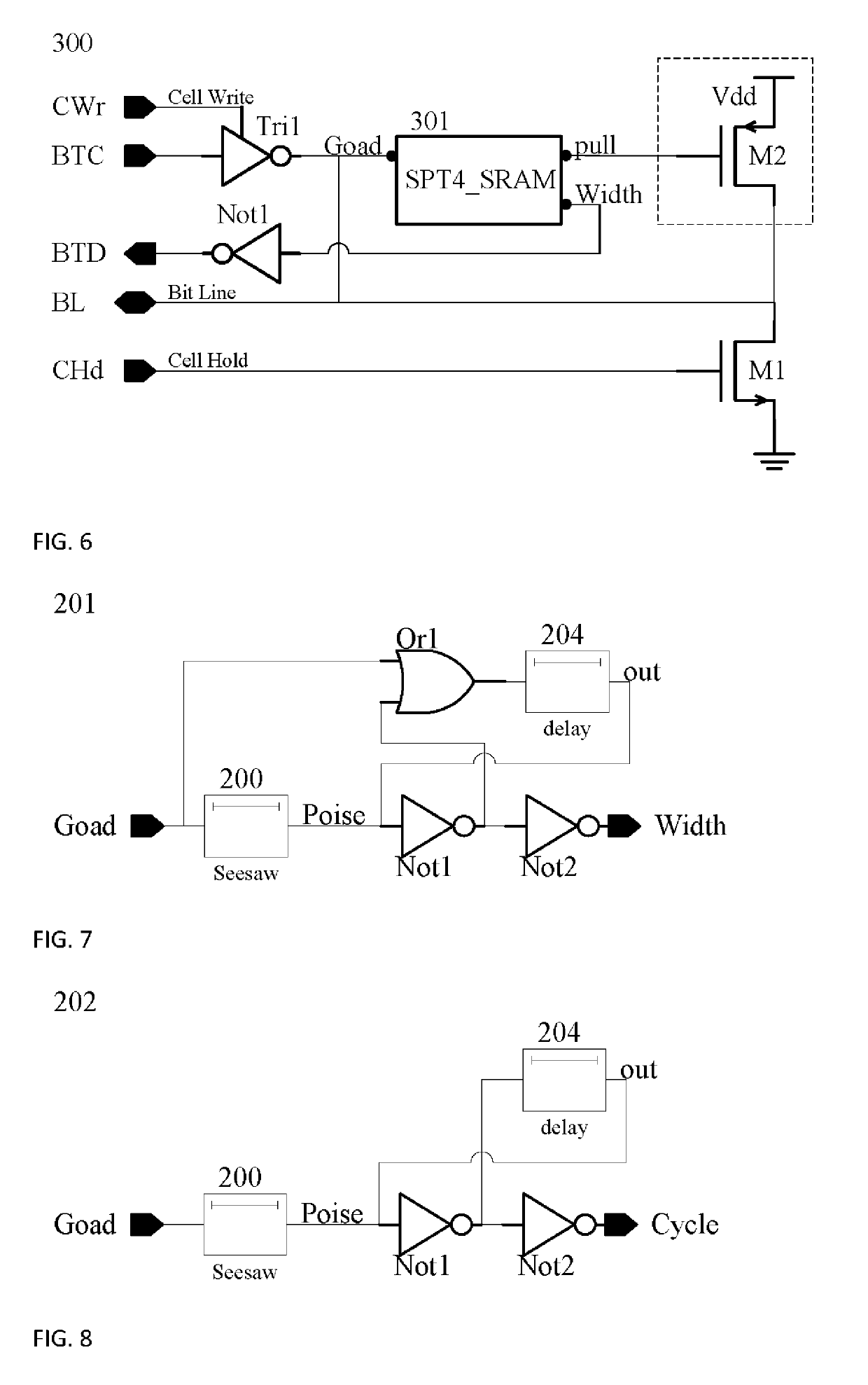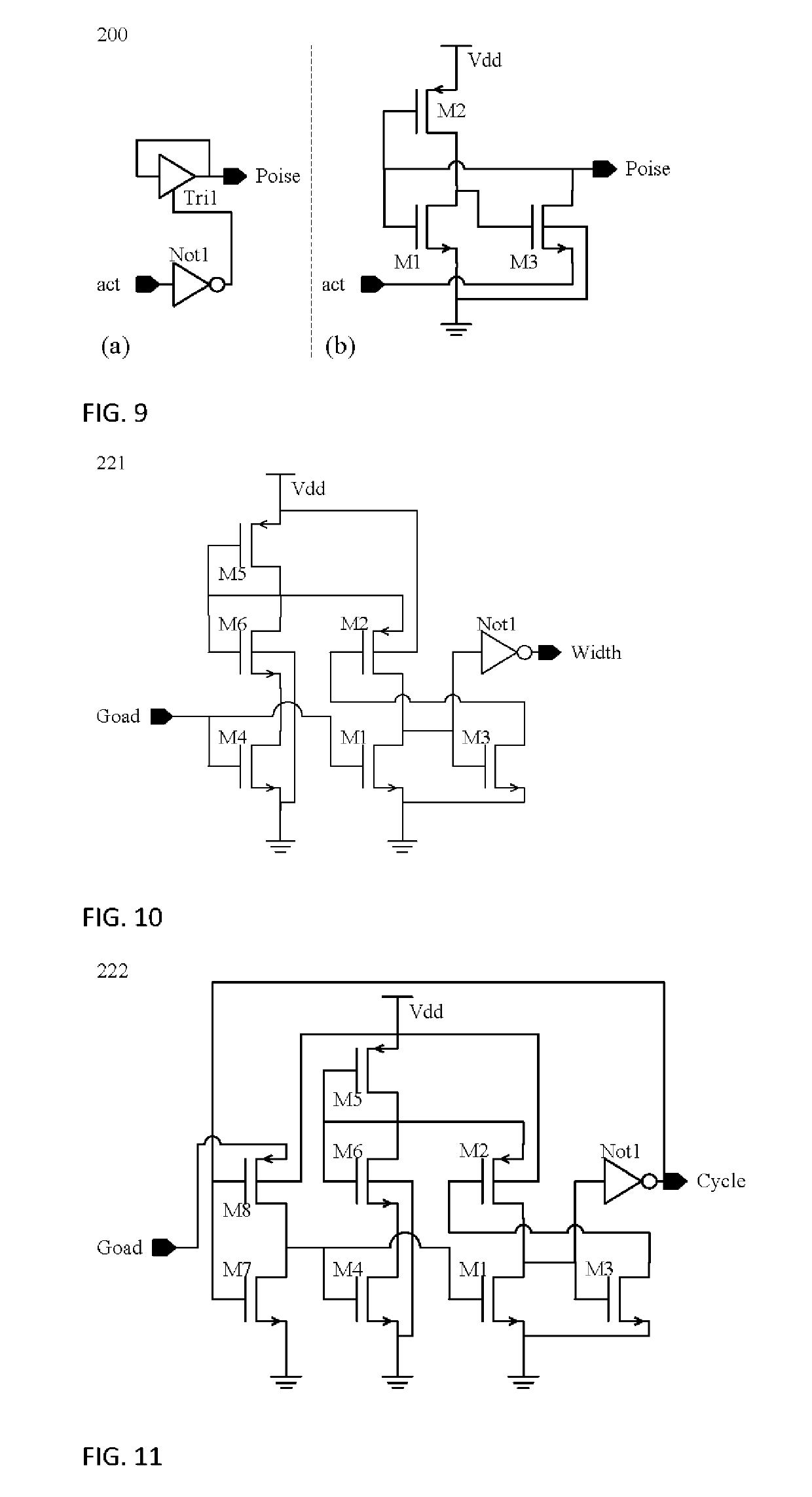1T1D DRAM cell and access method and associated device for DRAM
a random access memory and access method technology, applied in the field of memory elements of random access memory, can solve problems such as poor performance of all, and achieve the effect of enhancing the performance of all
- Summary
- Abstract
- Description
- Claims
- Application Information
AI Technical Summary
Benefits of technology
Problems solved by technology
Method used
Image
Examples
first embodiment
[0056]the present invention: Refer to FIG. 4, an SRAM cell 100 is consisting of three transistors and one diode under transistor-level design, which will be stated as “3T1D SRAM cell” in the following. In FIG. 4, M1 to M3 are a MOSFET respectively stated as first to third transistor, wherein M1 is an NMOS while M2 and M3 are a PMOS, and D1 is a diode comprising an anode and a cathode. The anode is called a first connective point and the cathode is called a second connective point. The other nodes are similar with those in FIG. 1-FIG. 3.
[0057]The 3T1D SRAM cell 100 comprises a data transmission node, a transmission control node, a cell power terminal point, a ground terminal point, a first transistor, a second transistor, a third transistor, and a first diode.
[0058]The wiring net of said first transistor is described as follows: the source terminal couples to said data transmission node; the gate terminal couples to said transmission control node; the drain terminal connects to gate ...
second embodiment
[0064]the present invention: refer to FIG. 5, an SRAM cell 100 is consisting of three transistors and one capacitor under transistor-level design, which will be stated as “3T1C SRAM cell” in the following. Please note that this embodiment will be easier to implemented by Silicon-On-Insulator (SOI) process technology, and the produced transistor has no bulk. In FIG. 5, M1 to M3 are a MOSFET respectively stated as first to third transistor, wherein M1 is an NMOS while M2 and M3 are a PMOS, and C1 is a capacitor comprising a first connective point and a second connective point. The other nodes are similar with those in FIG. 1-FIG. 4.
[0065]The 3T1C SRAM cell comprises a data transmission node, a transmission control node, a cell power terminal point, a ground terminal point, a first transistor, a second transistor, a third transistor, and a first capacitor. The wiring net can be referred to aforementioned 3T1D SRAM cell 100, the detailed description is omitted here.
[0066]The 3T1C SRAM c...
third embodiment
[0069]the present invention: refer to FIG. 6, which is an exemplary circuit diagram, wherein the Cell Access and Hold 300 (CAH 300) is a circuit diagram combining transistor-level design, gate-level design and function blocks. M1 and M2 are a MOSFET respectively stated as first and second transistor, wherein M1 is NMOS while M2 is PMOS. In FIG. 6, Tri1 is tri-state gate; Not1 is NOT gate.
[0070]SPT_SRAM 301 is a function block diagram, arranged to detect BL. When BL is slightly increased to high voltage from a relatively low voltage, a rail-to-rail high voltage is quickly outputted. This will be discussed in the following paragraphs. In FIG. 6, “Goad” is a first input connective point, “Width” is a first output connective point, and “pull” is a second output connective point.
[0071]An input node: Cell Write, hereinafter “CWr”, is a control node arranged to start function of cell write, and change storage status of aforementioned memory element.
[0072]An input node: Cell Hold, hereafter...
PUM
 Login to View More
Login to View More Abstract
Description
Claims
Application Information
 Login to View More
Login to View More - R&D
- Intellectual Property
- Life Sciences
- Materials
- Tech Scout
- Unparalleled Data Quality
- Higher Quality Content
- 60% Fewer Hallucinations
Browse by: Latest US Patents, China's latest patents, Technical Efficacy Thesaurus, Application Domain, Technology Topic, Popular Technical Reports.
© 2025 PatSnap. All rights reserved.Legal|Privacy policy|Modern Slavery Act Transparency Statement|Sitemap|About US| Contact US: help@patsnap.com



